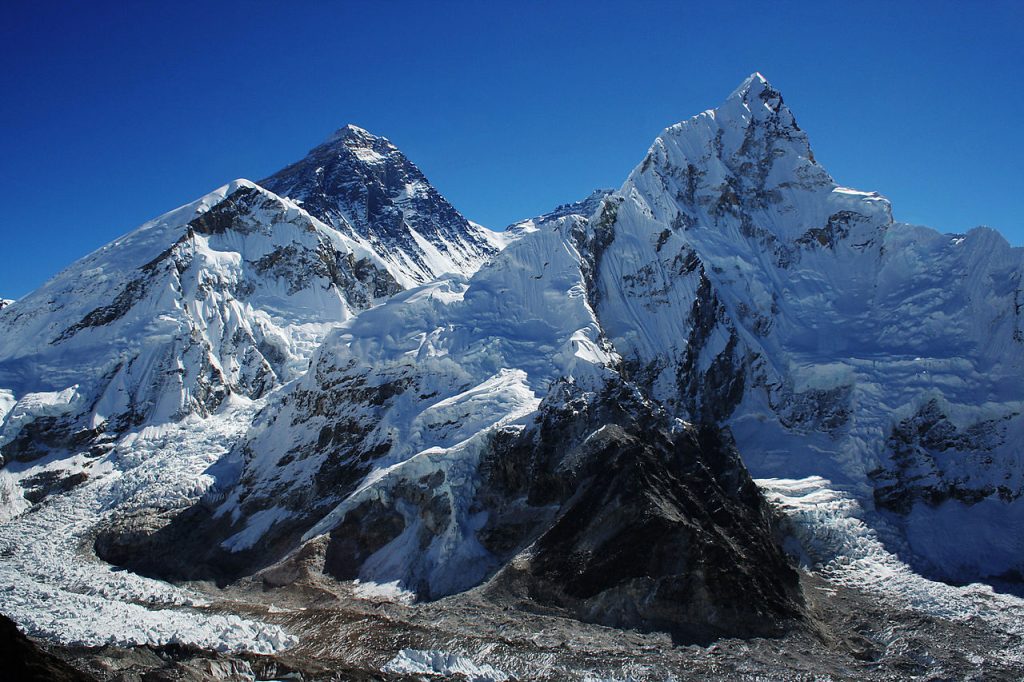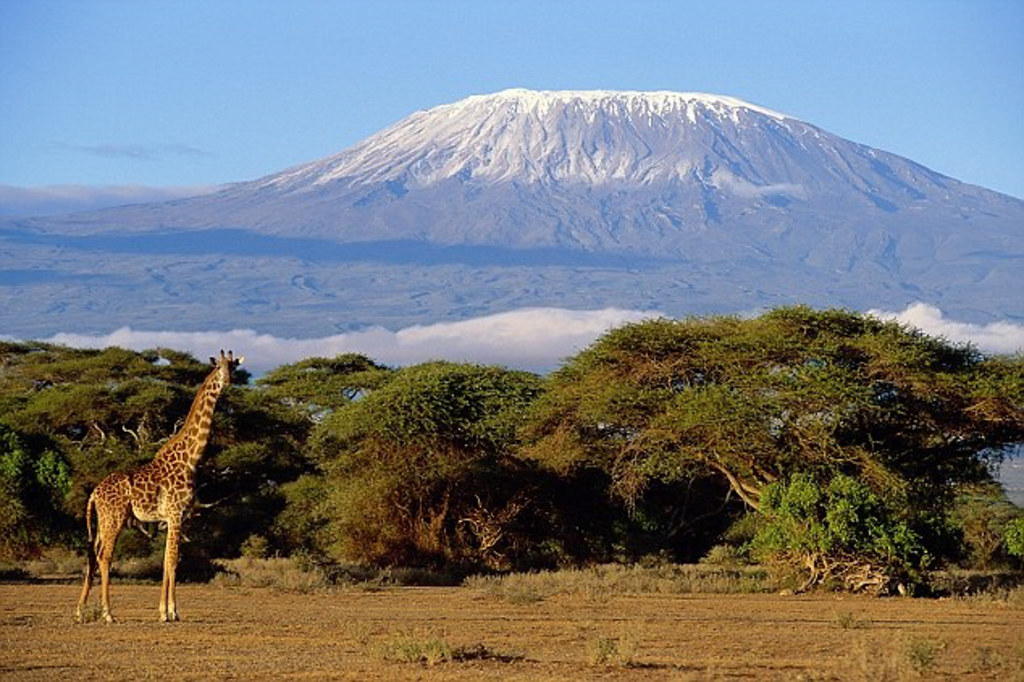Mountains are often seen as a symbol of strength, majesty, and mystery. They represent the power of nature and the beauty of the natural world. Two of the most famous mountains in the world are Kilimanjaro in Africa and Everest in Asia. These two peaks attract thousands of climbers each year who seek to challenge themselves and experience the awe-inspiring beauty of these mountains. In this article, we will compare and contrast Kilimanjaro Vs Everest, including their geography, climbing difficulty, cultural significance, and environmental impact.
Introduction
Kilimanjaro and Everest are two of the most iconic and popular mountains in the world. Kilimanjaro is located in Tanzania, Africa, while Everest is in the Himalayas, on the border of Nepal and Tibet. Kilimanjaro is the highest mountain in Africa, standing at 5,895 meters (19,341 feet), while Everest is the tallest mountain in the world, reaching a height of 8,848 meters (29,029 feet). Climbing both mountains is a significant challenge, requiring physical and mental strength, as well as determination and perseverance. The purpose of this article is to compare and contrast the two mountains and provide some insights into what makes them unique.

Background Information
Kilimanjaro is located in the Kilimanjaro National Park in Tanzania. It is a dormant volcanic mountain, composed of three distinct volcanic cones: Kibo, Mawenzi, and Shira. Kibo is the highest peak, standing at 5,895 meters (19,341 feet). Kilimanjaro is a popular climbing destination, attracting over 50,000 climbers each year. The mountain has five main routes for climbers to choose from: Marangu, Machame, Lemosho, Rongai, and Umbwe.
Everest, on the other hand, is located on the border between Nepal and Tibet in the Himalayan mountain range. It is the tallest mountain in the world, standing at 8,848 meters (29,029 feet) above sea level. Everest is named after Sir George Everest, a British surveyor who was instrumental in the mapping of India. The mountain has two main climbing routes: the South Col route in Nepal and the North Col route in Tibet.
Climbing both mountains is challenging and requires a high level of physical and mental fitness, as well as experience in high-altitude climbing. Kilimanjaro is considered to be a non-technical climb, meaning that it does not require the use of technical climbing equipment such as ropes, harnesses, and ice axes. However, the altitude and extreme weather conditions make the climb challenging. Everest, on the other hand, is a technical climb, requiring the use of ropes, harnesses, and ice axes, as well as experience in high-altitude climbing.
Climbing Kilimanjaro vs Everest
Climbing Kilimanjaro and Everest are two very different experiences, and each requires a different level of skill, fitness, and equipment. In this section, we will compare and contrast the difficulty levels of climbing both mountains, including the required skills, fitness levels, and equipment.
Difficulty Levels
Climbing Kilimanjaro is considered to be a challenging climb, but it is not technically difficult. The climb requires a high level of physical fitness and endurance, as well as the ability to withstand high altitudes. The climb to the summit of Kilimanjaro can take anywhere from five to nine days, depending on the chosen route and the climber’s pace.
Climbing Everest, on the other hand, is one of the most challenging climbs in the world. The climb requires a high level of technical skill, as well as extensive experience in high-altitude climbing. The climb to the summit of Everest can take up to two months, depending on the weather conditions and the pace of the climber.
Required Skills
Climbing Kilimanjaro does not require any technical climbing skills. However, climbers need to be physically fit and have some hiking experience. They also need to be able to acclimatize to high altitude conditions, as the climb to the summit takes them above 5,000 meters (16,400 feet).
Climbing Everest, on the other hand, requires a high level of technical skill, including the ability to use ropes, harnesses, and ice axes. Climbers also need to have extensive experience in high-altitude climbing and be able to deal with extreme weather conditions. Many climbers spend years preparing for the climb and undergo extensive training to develop the necessary skills.
Fitness Levels
Climbing Kilimanjaro requires a high level of physical fitness, but it is possible for climbers of all fitness levels to attempt the climb. However, climbers need to be able to hike for several hours a day, often on steep and uneven terrain. They also need to be able to carry a backpack weighing up to 15 kilograms (33 pounds) and acclimatize to high altitude conditions.
Climbing Everest, on the other hand, requires an exceptional level of physical fitness, as well as the ability to perform in extreme conditions. Climbers need to be able to carry heavy loads, often over long distances and up steep slopes. They also need to be able to deal with extreme cold, high altitude sickness, and the mental stress of a long and challenging climb.
Equipment
Climbing Kilimanjaro does not require any technical climbing equipment, but climbers need to have appropriate hiking gear, including sturdy hiking boots, warm clothing, and a good quality sleeping bag. They also need to carry a backpack containing food, water, and other essentials.
Climbing Everest, on the other hand, requires a wide range of technical climbing equipment, including ropes, harnesses, and ice axes. Climbers also need to have specialized high-altitude gear, including down jackets, insulated pants, and boots suitable for extreme cold. The equipment required for climbing Everest can be expensive, with some climbers spending tens of thousands of dollars on gear alone.
Success Rates and Costs
The success rate for climbing Kilimanjaro is relatively high, with around 60% of climbers reaching the summit. The success rate is higher for those who choose longer and more challenging routes. The cost of climbing Kilimanjaro varies depending on the route and the level of service required, but it typically ranges from $1,500 to $4,500.
The success rate for climbing Everest is much lower, with around 30% of climbers reaching the summit. The success rate is heavily dependent on weather conditions and the climber’s experience and fitness levels. The cost of climbing Everest is also much higher, with some climbers spending upwards of $100,000 on permits, guides, and equipment.
Cultural and Environmental Considerations
Both Kilimanjaro and Everest have significant cultural and environmental significance. In this section, we will discuss the cultural significance of both mountains, including their importance to local communities and their use in religious and cultural ceremonies. We will also compare and contrast the environmental impact of climbing both mountains, including issues related to waste, erosion, and conservation.
Cultural Significance
Kilimanjaro is a sacred mountain to the local Chagga people, who have lived in the area for centuries. The mountain is believed to be the home of their god, Ngai, and is an important part of their religious and cultural practices. The Chagga people have a deep respect for the mountain and have developed a sustainable tourism industry that benefits their community. Many climbers on Kilimanjaro take part in cultural activities, such as visiting local villages and learning about Chagga customs and traditions.
Everest is also an important cultural site, particularly for the Sherpa people who live in the region. The Sherpas are an indigenous group who have lived in the Everest region for generations and have a deep spiritual connection to the mountain. Mount Everest is known as Chomolungma, which means “Goddess Mother of the World,” in the Sherpa language. Climbing Everest has significant cultural implications for the Sherpa people, who rely on tourism for their livelihoods but also face risks to their cultural heritage and environment.
Environmental Impact
Climbing Kilimanjaro has a relatively low environmental impact, particularly compared to climbing Everest. The Tanzanian government has implemented a number of measures to reduce the impact of tourism on the mountain, including limiting the number of climbers, establishing designated camping areas, and requiring climbers to pack out all waste. However, there are still concerns about the impact of tourism on the mountain, particularly related to erosion and litter.
Climbing Everest has a much greater environmental impact, due to the high number of climbers and the extreme altitude of the mountain. The Nepal government has also implemented measures to reduce the impact of tourism, including requiring climbers to carry out their waste and imposing strict regulations on climbing activities. However, there are still concerns about the impact of climbing on the fragile ecosystem of the mountain, including issues related to waste, erosion, and conservation of endangered species.
Video: Mount Everest VS Mount Kilimanjaro – Natural Wonders
Conclusion
Both Kilimanjaro and Everest are iconic mountains that have significant cultural and environmental importance. Climbing Kilimanjaro is a challenging but accessible experience that can be enjoyed by climbers of all levels, while climbing Everest is an extreme and dangerous undertaking that requires a high level of technical skill, physical fitness, and experience. Both mountains have their unique challenges and rewards, and the choice of which to climb depends on individual goals, preferences, and abilities.
It is important for climbers to consider the cultural and environmental impact of their climbing activities and to ensure that they are taking steps to minimize their impact on the mountain and the local communities. With responsible tourism practices, climbers can enjoy the beauty and majesty of these iconic mountains while also contributing to sustainable tourism and cultural preservation.












